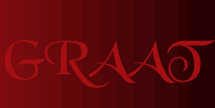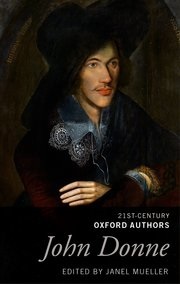
Editor-in-chief: Georges-Claude Guilbert
Book Review Editor: Molly O'Brien Castro
![]()
John Donne: 21st-Century Oxford Authors Janel Mueller, ed., (Oxford: Oxford University Press, 2015). UK £95 (hardback), 656 pages, ISBN 978-0199596560— Pádraic Lamb, Université François-Rabelais, Tours.
The elucidation of the poetry of John Donne has been the work of a century. His friend and rival Ben Jonson famously said that Donne’s work, ‘for not being understood, would perish.’ Now, thanks to a large number of patient editors, starting with Herbert Grierson in 1912, we can safely say that Jonson has been proved wrong on both counts. This latest edition, by Janel Mueller, which comprises selections from poetry and prose, drawn from manuscript and early printed editions, has copious lucid annotation in an approximate ratio of one page of Donne to one page of notes.
The work of annotation is, of course, never completely finished, as the ongoing Variorum Edition of the Poetry of John Donne (1995-, 8 vols.) demonstrates; progress in this field, however, has concentrated editorial minds, scholar and publisher, on other aspects of Donne, dovetailing with trends in twenty-first-century Early Modern studies, namely manuscript histories and reader reception studies.
The 21st-Century Oxford Authors edition under review is essentially an attempt to give a picture of Donne’s literary presence in English circles, contemporaneous to the composition and reading of his works. As the editor points out, this attempt is justified by the extraordinary circulation of Donne’s poetry in manuscript; the circulation of Ben Jonson’s seven hundred and thirty nine manuscripts is utterly dwarfed by the five thousand or so Donne manuscripts of the seventeenth century. John Donne was rather better known as a poet before the 1633 posthumous Poems than has previously been thought. Rather than the ‘exhaustive study of the manuscript and print history of Donne's poetry’ which the Variorum Edition sets out to be, and differing from John Carey’s chronological Oxford World Classics edition (1990, rev. ed. 2000) in her focus on manuscripts, Janel Mueller has furnished an annotated chronological selection of Donne’s writing, based on single textual sources, which established his reputation as a writer during his lifetime. It draws, in turn, on the most authoritative manuscript collections and the several printed texts submitted for publication by Donne himself. This volume, then, assembles: his pre-1600 compositions drawn from the Westmoreland Manuscript; the Loseley Papers concerning Donne’s career-ending marriage to Anne More (1602); the printed text of the Anniversaries (1611-1612); the pre-1615 compositions in the Dowden Manuscript; the religious lyrics of the Westmoreland Manuscript written between 1607 and 1620; and finally, the text of the printed Devotions Upon Emergent Occasions (1624).
The mass availability to scholars of practically all Early Modern printed texts via the Early English Books Online (EEBO) portal has no doubt, somewhat ironically, fuelled the rise of interest in manuscripts and manuscript annotations: new and original perspectives are more likely to be gleaned from little-known documents than from pored-over PDFs. In Donne’s particular case, the chronological approach, guaranteed by the reliance on contemporary manuscripts and publications, allows us to see the development of his art from the perspective of his peers and in the (manuscript) groupings that Donne himself controlled to a certain degree, as well as track Donne’s own development in relation to contemporary publications and events.
This edition is useful, therefore, in undoing the generic divisions which first appeared in the 1635 edition, and marked modern editions of Donne, from Grierson to the widely-read Penguin Classics paperback editions of A. J. Smith (1971), and Ilona Bell (2012). These divisions, for example, separate between two sections (Elegies and Epicedes and Obsequies) elegies gathered together in manuscript circulation, and therefore distort the way Donne’s first readers came into contact with his work. The only very minor omission I came across concerns the first publication date of two elegies, ‘To his Mistress going to bed’, ‘Whoever loves, if he do not propose’, which was in fact in The Harmony of the Muses (STC C105, 1654), and not, as stated, in the fifth edition of the Poems in 1669.
Another perhaps better known example is examined by the editor in some detail in the notes. It is of course the relationship between the two differing Holy Sonnets sequences recorded in the Westmoreland and Dowden manuscripts, which, firstly, provide our chief evidence of Donne’s practice of revising his work, and, secondly, allows literary analysis of the process of distillation and the re-ordering of the longer sequence from which emerged the more familiar twelve-sonnet series preserved in the Dowden manuscript.
These are valuable critical interventions, which, profiting from Donne’s perennial popularity, are also potentially useful starting-points for teaching students about the nature of Renaissance textuality and authorship. Nevertheless, as mentioned above, the availability of the early printed texts, as well as the recent digitization of the Westmoreland manuscript by the DigitalDonne project*, makes one wonder if Oxford could not have sought to do a finer deed by digitizing the Dowden manuscript as well, held at the Bodleian Library, thus enabling all scholars and students to access the principal texts online for free. Things are not so simple, of course, and the Oxford University Press, much less the editor, does not control the collections of the Bodleian. A facsimile or diplomatic print edition of the entire Dowden manuscript would be welcome, and, one imagines, present the advantage of being relatively cheap to produce yet still generating revenue. Given that—and by this meaning no disrespect to the rich annotation and hard work of the editor—the textual variants are limited (with the exception of the Holy Sonnets), and also given the scale of the Variorum project, and the recent publication of a two-volume annotated Complete Poems (ed. Robin Robbins, Longman, 2008), one could in fact argue that there is a limited need for new annotated editions of the poetry.
It is, then, the making available a newly annotated complete text of the Devotions Upon Emergent Occasions, and severall steps in my Sicknes for which I am particularly grateful. This series of twenty-three tripartite units—composed of a meditation upon the human condition, a contestation with God and a final prayer to him—is the record of spiritual exercises undergone, or undertaken, during a near-fatal physical illness, and is surely among Donne’s least-read works. It benefits here from the critical and generic overview provided, as well as the signalling and explanation of the many medical, classical, theological and Biblical references. Furthermore, the similarities between the Devotions and the Anniversaries are brought out by a scrupulous attention to the texts; the study of the Devotions in relation to the poetry will certainly be encouraged by this edition.
The specialized perspective and the price of this volume mean that it is destined for the use of scholars, rather than students (The volume under review retails at approximately €120). Somewhat strangely, therefore, and no doubt due to the constraints of the series in which the volume appears, a bibliography of works mentioned is lacking; an index nominum of authors mentioned in the notes would also have been useful.
*http://digitaldonne.tamu.edu/NY3-biblio.html
© 2016 Pádraic Lamb & GRAAT On-Line

Senior
sub-editor: Hélène Tison
lntison@yahoo.fr
Webmaster: Georges-Claude Guilbert

